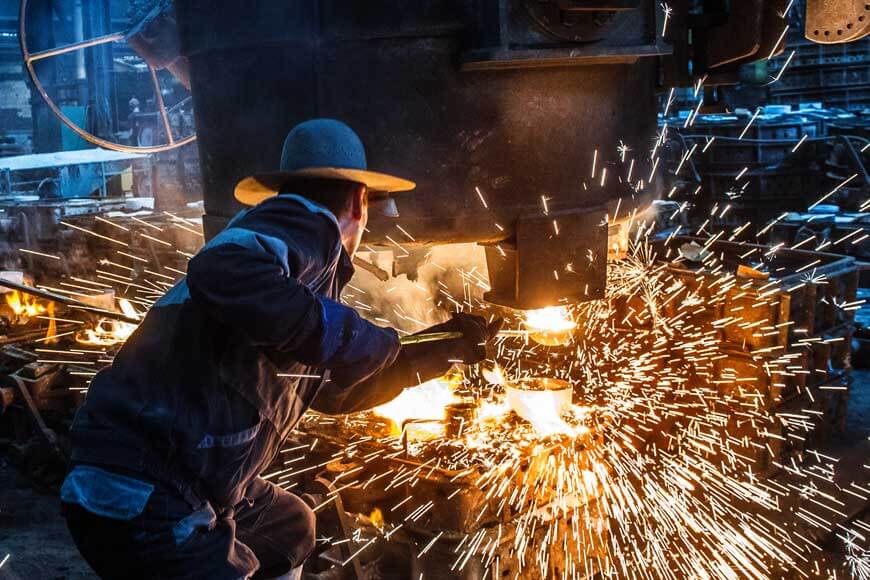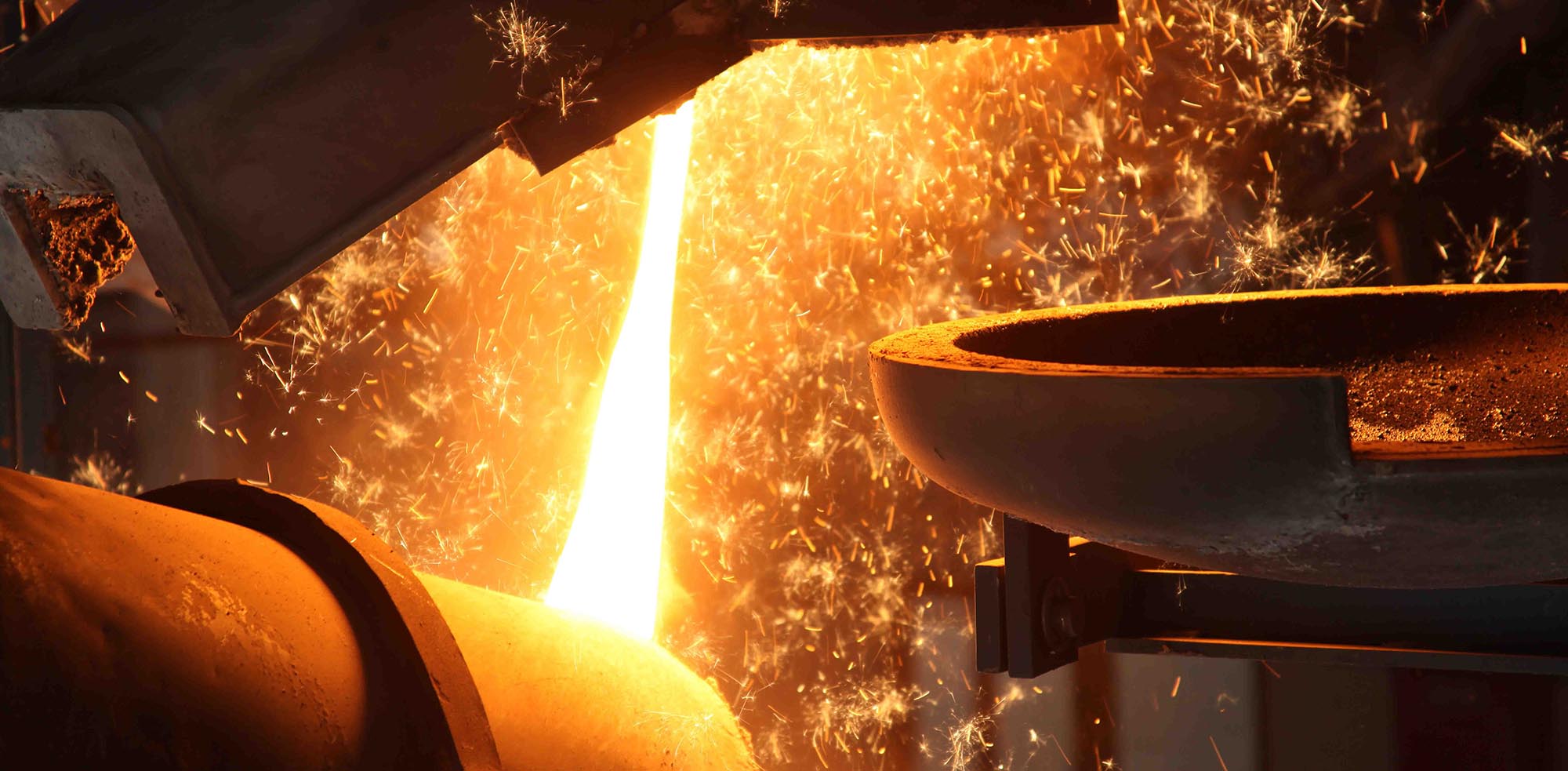Why technology is transforming modern Metal Foundry operations
Wiki Article
Checking out the Function of a Metal Foundry in Modern Manufacturing Processes
Metal foundries are crucial in the landscape of modern-day production. They supply essential components throughout different markets, adjusting to the needs of sectors such as auto and aerospace. Advanced techniques such as 3D printing and automated casting have actually changed their procedures. Furthermore, sustainability has come to be a top priority, affecting their methods. As these foundries evolve, the effects for producing efficiency and technology are considerable, raising questions concerning their future trajectory in an ever-changing economic climate.The Evolution of Metal Casting Strategies

With the rise of mass production, foundries embraced techniques like die casting and shed foam casting, simplifying the production procedure and lowering waste. Each advancement in metal casting strategies has actually satisfied the requirements of numerous sectors, from vehicle to aerospace. As metal casting proceeds to breakthrough, the interaction in between method and innovation stays vital in meeting contemporary production obstacles, guaranteeing that foundries prosper and adapt in an ever-changing landscape.
Integration of Advanced Technologies in Foundries
Typical metal casting techniques have offered the sector well for centuries, the combination of advanced innovations in foundries is revolutionizing the production landscape. Automation and robotics enhance production procedures, enhancing efficiency and lowering the danger of human error. Technologies such as 3D printing permit for fast prototyping and the creation of intricate geometries that were when difficult with conventional techniques. Additionally, information analytics and the Web of Things (IoT) allow real-time surveillance and anticipating upkeep, inevitably leading to decreased downtime and enhanced efficiency. These innovations likewise assist in personalization, enabling suppliers to respond quickly to market demands. As sustainability becomes a top priority, the fostering of eco-friendly modern technologies, such as electric melting heating systems and advanced sand reclamation systems, further shows the market's commitment to technology. Jointly, these modern technologies not just boost operational effectiveness yet additionally position foundries at the leading edge of modern-day manufacturing techniques.The Influence of Product Scientific Research on Foundry Workflow
Material science plays an essential role in boosting factory procedures, influencing both the option of products and the overall casting process. Advances in material scientific research supply a much deeper understanding of the homes of steels and alloys, making it possible for foundries to select one of the most appropriate products for specific applications. This understanding boosts the performance and sturdiness of cast items, which is necessary for satisfying industry standards.Additionally, innovations in material formulations and ingredients add to enhanced casting strategies, enhancing and lowering flaws manufacturing performance. The growth of innovative metal compounds and wise products allows foundries to create lighter, stronger elements, which are progressively searched for in various industries such as automotive and aerospace.
In addition, material science help in the recycling of metals, making procedures more reliable and economical. By leveraging the most up to date searchings for in material scientific research, foundries can adapt to evolving market needs, ensuring their competition in a swiftly transforming manufacturing landscape.
Sustainability Practices in Modern Metal Foundries
With the growing focus on ecological duty, modern-day metal foundries are increasingly executing sustainability techniques to lessen their ecological footprint (Aluminum Foundry). One key approach entails the recycling of scrap metal, which not just lowers waste however also preserves energy and raw products. Foundries are taking on innovative melting modern technologies that improve energy efficiency, subsequently lowering greenhouse gas exhausts. Furthermore, the usage of ecologically pleasant finishings and materials has gotten traction, more reducing dangerous exhausts throughout productionWater preservation methods, such as closed-loop cooling systems, are being carried out to minimize freshwater use. Lots of foundries are likewise purchasing sustainable power resources, like solar and wind, to power their operations, consequently lowering dependence on fossil gas. Furthermore, team training programs concentrated on sustainability methods promote a society of environmental awareness within the workforce. These efforts jointly add to a more sustainable future for metal foundries while meeting the demands of eco-conscious consumers.
The Future of Foundries in an Altering Financial Landscape
As the worldwide economy progresses, foundries face a myriad of challenges and chances that will form their future (Metal Foundry). The increasing demand for light-weight materials and progressed alloys necessitates development in production methods and technical combination. Automation and clever production methods are ending up being important for improving efficiency and decreasing operational costs. On top of that, the surge of sustainability worries compels foundries to embrace greener processes and reusing campaigns, straightening with international environmental objectivesThe financial landscape is additionally changing, with supply chain disturbances and changing raw product costs Click This Link offering substantial obstacles. Foundries need to adjust by expanding their supply sources and purchasing materials scientific research. Furthermore, collaboration with sectors such as renewable resource and electric lorries can promote development. Inevitably, the future of foundries will rely on their capability to leverage technological advancements while go to website continuing to be receptive to market characteristics and environmental imperatives, ensuring their significance in modern-day manufacturing.
Often Asked Inquiries
What Kinds of Metals Are Commonly Used in Foundries Today?
Frequently utilized metals in foundries today consist of light weight aluminum, iron, steel, copper, and zinc. These products are favored for their diverse properties, enabling a wide array of applications in markets such as auto, aerospace, and building.Just how Does a Factory Make Certain Quality Assurance in Its Products?

What Safety Procedures Are Applied in a Metal Foundry?
Metal foundries apply security procedures consisting of individual safety equipment, air flow systems to minimize inhalation of fumes, routine safety training for employees, emergency feedback procedures, and rigorous equipment upkeep to reduce dangers and ensure a secure workplace.Just how Long Does the Metal Casting Process Generally Take?
The metal casting process normally takes a number of hours to days, relying on variables such as the complexity Look At This of the mold and mildew, the kind of metal used, and cooling times. Each job's requirements considerably influence the duration.What Industries Largely Depend On Metal Foundries for Production?
Automotive, building and construction, equipment, and aerospace markets mostly rely upon metal foundries for production. These industries utilize cast metals for parts, making certain sturdiness and performance vital for their respective applications in production and setting up procedures.
Metal foundries are pivotal in the landscape of contemporary manufacturing. Metal Casting. Traditional metal casting methods have actually served the sector well for centuries, the integration of sophisticated innovations in foundries is revolutionizing the manufacturing landscape. Developments in material science offer a much deeper understanding of the homes of alloys and metals, enabling foundries to choose the most suitable materials for specific applications. With the expanding focus on environmental duty, contemporary metal foundries are increasingly executing sustainability techniques to minimize their ecological impact. Automotive, machinery, building, and aerospace sectors mostly depend on metal foundries for production
Report this wiki page